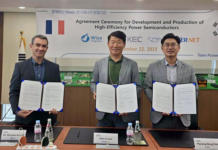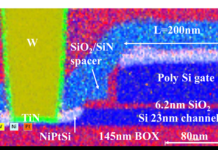In a clear sign of recovery from a disappointing downturn just two years ago, global spending on semiconductors rose to a five-year high in 2017, spurred by a hike in the pricing of memory components as well as by solid growth in chip spending across all technology markets.
Overall, the Served Available Market (SAM) for semiconductor spending worldwide amounted last year to $292.0 billion, up a resounding 17% from $250.0 billion in 2016. The double-digit growth is the strongest since the beginning of the forecast period in 2013 and represents a stunning turnaround from a 2% contraction in 2015.
The SAM metric counts only expenditures that an OEM and its designated manufacturer or contractor made as an external agent, which gives a truer picture of the state of chip spending in the electronics industry. This is because the SAM does not factor in OEM chip spending done at in-house divisions—as can happen with entities like Samsung Electronics, which has internal Samsung affiliates as customers competing with external clients in sourcing Samsung-made semiconductors.
A large part of chip-spending growth last year can be attributed to inflated prices in DRAM and NAND flash memory because of a shortage in memory supply, caused by strong demand from data servers, among other factors. If market equilibrium between supply and demand is reestablished for those memory components this year, prices will likely normalize, and growth in semiconductor spending is projected to return to single-digit territory in 2018.
Among application markets, the largest share in 2017 by OEM semiconductor spend SAM went to wireless communications at 38%, followed by computer platforms at 17%. Markets characterized by traditionally low semiconductor consumption, such as industrial and automotive, are also becoming strong drivers of chip spending, as those segments enter a new technological phase driven by the all-things-connected phenomenon known as the Internet of Things (IoT).
The IHS Markit database for OEM chip spending SAM tracks only those companies that generate $1 billion or more in annual revenue, so that the overall SAM reflected in the database will be less than the value of the total semiconductor market.
Chip spending also rises among OEMs; Apple stays at the top
Aside from the higher memory prices, the robust growth last year in global chip spending can also be traced to OEMs spending more—not only to meet rising demand for equipment, but also to confront a challenging environment for cost components caused by shortages in discretes and microcomponents alongside memory.
For the fifth year in a row, Apple was the world’s largest buyer of semiconductors. Last year the Silicon Valley-based maker racked up $47.3 billion in chip spending, nearly double the $24.2 billion spent by No. 2 Samsung Electronics. Samsung, the world’s biggest chip supplier, is also probably the world’s foremost buyer of semiconductors overall. Utilizing the SAM metric, however, any chip spending done by the internal divisions of the vast South Korean conglomerate does not count toward the total accredited to Samsung Electronics, the principal entity.
Both Apple and Samsung have stayed in the top spot and runner-up position, respectively, since 2013, and the rankings are expected to remain unchanged for the foreseeable future.
Joining Apple and Samsung in the top five are Lenovo in third place with $15.0 billion, Huawei Technologies in fourth with $14.2 billion, and Dell Technologies in fifth with $9.0 billion. Huawei, with its share of the global smartphone market growing, could soon overtake Lenovo, whose smartphone and PC businesses continue to underperform.
Together, the top 10 accounted for some $144.8 billion in chip spending during 2017, or approximately 50% of the global total, up slightly from 48% in 2016; the 2% difference between the two years is equivalent to a gain of $25.6 billion in 2017.
The table below shows the top 10 OEMs by global semiconductor spend SAM during 2016 and 2017, as well as the year-over-year percentage change in chip spending for each OEM.
The pie chart below shows the share of market in 2017 of the top 10 OEMs on chip spending SAM. The top 10 as a group accounts for 50% of the global total.
Asia Pacific leads the way
Among regions, Asia Pacific took up the largest share of market, accounting for 66% of the world total. In second place was the Americas region covering both North America and Latin America; followed in third place by the Europe-Middle East-Africa region, also known as EMEA. Japan, considered as its own region given the country’s outsize importance in the market, occupied fourth place.
For more information, including a detailed forecast of global chip spending and the top OEMs, see our report, OEM Semiconductor Spend Tracker—H2 2017

















